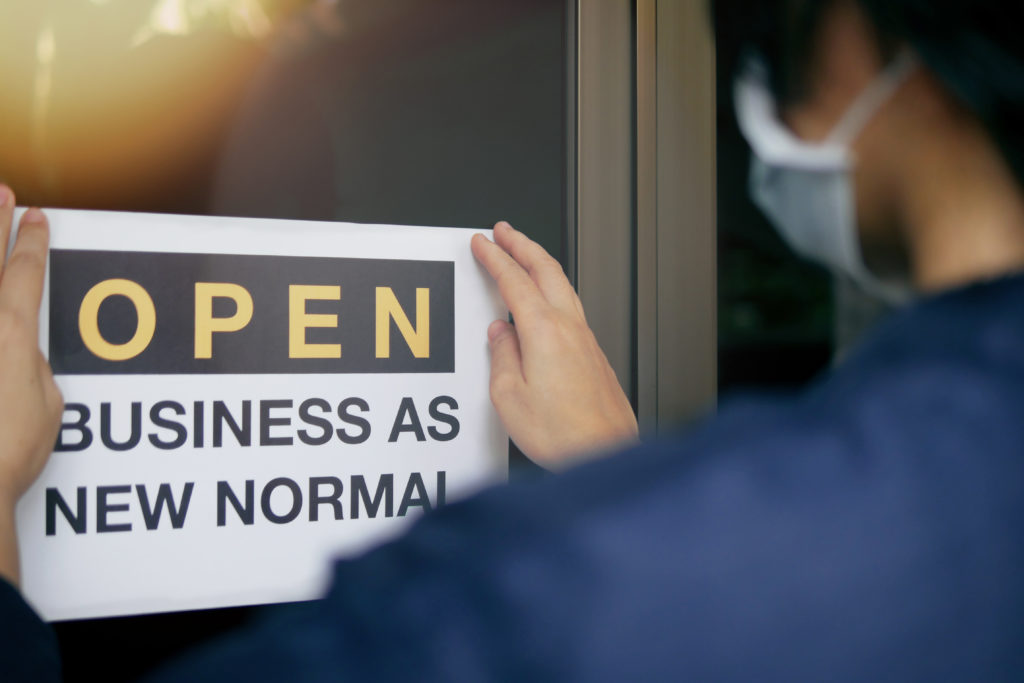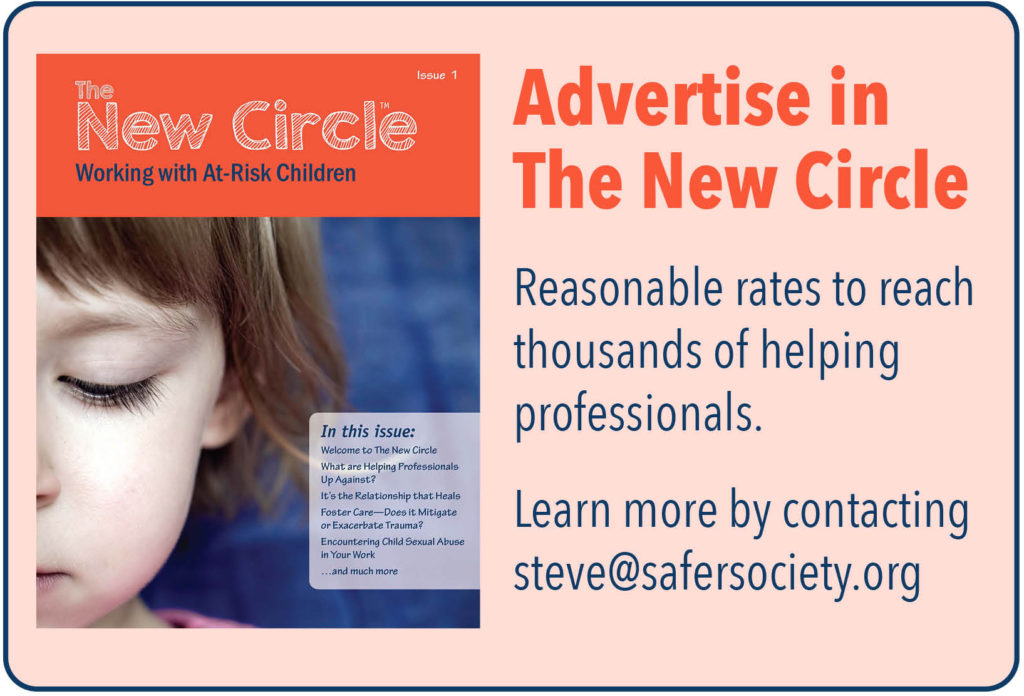A Time for Adaptation and Innovation
By Phil Rich, EdD, MSW
Welcome to the second issue of The New Circle. This is, of course, an especially, and enormously, difficult time in the U.S., and across the world. The pandemic, a collapsing economy, and racial and ethnic social stress have towered over U.S. life for months now, with the sad promise that each of these realities are with us for some time, as we struggle to find answers that work.
Apryl Alexander has graciously accepted our invitation to serve as feature editor for articles and themes that recognize and address cultural adversity, a crucial subset, if you will, of the broader range of adverse childhood experiences faced by many of the children and adolescents this magazine is designed to serve. But racial adversity in itself is a special form of challenge, risk, and developmental insult experienced by children and adolescents of color. Apryl’s article in this issue focuses on racial stress and systemic injustices towards marginalized communities in the U.S., and the recent and clear increase in hate crimes. This creates additional stress and frustration, as well as having negative effects on physical and mental health. Minoritized children, as well as adults, experience racial adversity on a regular basis, sometimes blatantly, but perhaps more commonly at the level of unspoken and sometimes fleeting racial microaggressions in daily interactions, and through institutional racism, including the school-to-prison pipeline.

Linda Metcalf, who has also kindly accepted our invite, and comes to our editorial team as feature editor for educational settings, also talks of the school-to-prison pipeline in her article. Linda describes a model alternative high school in Austin, Texas, designed to ensure success for its students, most of whom are the victims of adverse childhood and on-going developmental experiences including, in many cases, systemic racism. Linda describes the administration and faculty effectively “reaching and teaching” by ensuring as a first step that they, and not the students, have the right mindset, which in turn leads to students having real opportunities and support presented to them, in turn enabling and supporting success.

In his article, David Prescott, Publisher of The New Circle and the Editor of Safer Society Press, discusses how professionals working at the front lines with Covid-19, an ever present and serious risk, are dealing with the risks and the restrictions, as well as the increased risks and challenges faced by their clients and students. Like the teachers described by Linda, David talks, in part, about our mindsets, in this case the need for us to adapt to changes that require different thinking about how to effectively deal with our work. David reminds us that this is, in fact, happening. Both professionals and their clients have, in many cases, found effective ways to adapt, including the use of technology to help us meet and engage. Above all, David reminds us of two elements basic to effective helping work with others, no matter what the social conditions: connection and communication, both evident in the work of the administration and students at that Austin high school, and both needed as we address racial stress, inequity, and injustice in our society.
In The New Circle we want to describe challenges to our work, but also and especially solutions and pathways that show promise and success. Linda’s article exemplifies that, as does Lori Miller’s article, which returns squarely to the subject of adverse childhood experiences, in this case describing work with adolescents who have experienced physical abuse. Looking for solutions, Lori describes steps toward building a therapeutic relationship with these young people, who may, understandably, be wary of or misunderstand relationships, which again touches upon the all-important ingredient of our mindset; how we, the provider, think and behave, recognizing the importance of provider mindset and beliefs in the provision of effective educational and human services. As with David’s article, connection and communication rules; as Lori puts it, “Building trust is paramount.”


Lauren Busfield’s article similarly addresses adaptations required by restrictions imposed by the pandemic. Lauren highlights the switch in professional guidelines that have recommended significant limitations on the amount of daily online screen time for children and adolescents, to now recognizing the value and necessity of online time, encouraging the responsible use of the online world for education, social connection, shopping, and recreation. Lauren reminds us that many children and adolescents are already “digital natives,” and know their away around that world far better than many adults. But Lauren also describes for many children and teens the potentially traumatizing nature of having to live life this way now and for the foreseeable future, and our need to fully recognize, without dismissing or minimizing, this new reality. For many children, this new reality may have already changed their perception of the world, in some cases as even less safe and secure than it may have felt before. Nevertheless, in our current online world, we must find opportunities, as Lauren writes, for young people to find connection, education, and leisure. But, as with Linda and Lori’s articles, for instance, Lauren stresses that our ability to listen and hear is central. “If we listen, we might learn a lot from this adaptable, expressive, social, and digital generation.”
That theme of connection appears again in Erika Linskey’s follow-up article on mentoring. Erika describes the importance, not only of listening to and supporting our clients, but also ensuring we listen to and support the staff who deliver those services, and the necessity of clinical support for those who mentor at-risk youth. The work of building an enduring connection between mentors and at-risk children and teens cannot be built in a year, or even two, but instead requires a sustained supportive and engaged mentor relationship that may take 3-5 years. However, without the support and connection that mentors themselves need, this is an elusive goal; in this case, such support is provided through a partnership with a community-based counseling center, building the base for successful and enduring relationships between mentors and the young people with whom they engage.
As we work with young people, no matter what our role, Stuart Copans argues, “There is no such thing as a child.” That is, absent from understanding their roots, their culture, their developmental history, and their all-important family history and ecology, we cannot understand our young clients. Stu helps us create a foundation for thinking about the young person’s world by ensuring we gather a thorough history, and, in this case, a “map” of the child’s family, in which the genogram (the family map) sets the stage, helping us put the child’s life, behaviors, and experiences into context. As we move forward with our clients, we need to first look back in order to understand how they have arrived at this point in their development and who they are.
Listening, connecting, communicating, adapting, and innovating. These themes, running throughout issue 2 of The New Circle, also represent the tasks and challenges in our work with at-risk youth, but, importantly, also point to solutions.
Enjoy our articles, and we hope that Stu’s cartoons, including our captionless cartoon contest, add some needed levity and lightness to an otherwise challenging and difficult time. Stay safe.

Phil Rich, EdD, MSW
Phil Rich, presents, trains, and consults nationally and internationally, specializing in work with children with sexual behavior problems and adolescents and young adults who have engaged in sexually abusive behavior. Phil holds a doctorate in applied behavioral and organizational studies and a master’s degree in social work. He has been the director of six residential or day treatment programs and has worked in outpatient and partial and inpatient hospital care and, in his early days, as a street outreach worker. Phil is the author of several books that address work with sexually abusive youth, as well as a number of books focused on general mental health.

